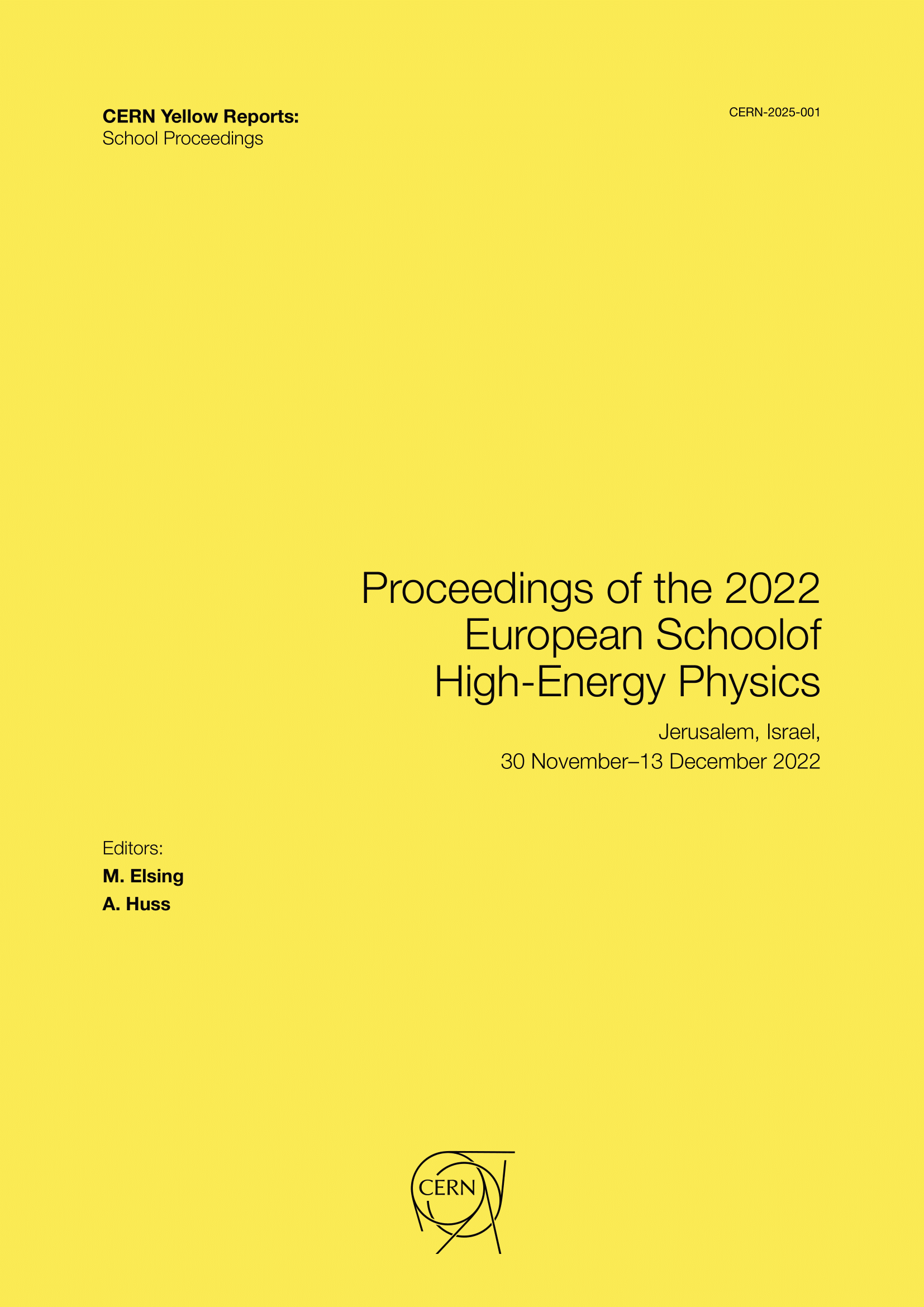Flavour physics
DOI:
https://doi.org/10.23730/CYRSP-2025-001.209Abstract
We explain the reasons for the interest in flavor physics. We describe flavor physics and the related CP violation within the Standard Model, with emphasis on the predictions of the model related to features such as flavor universality and flavor diagonality. We describe the flavor structure of flavor changing charged current interactions, and how they are used to extract the CKM parameters. We describe the structure of flavor changing neutral current interactions, and explain why they are highly suppressed in the Standard Model. We explain how the B-factories proved that the CKM (KM) mechanism dominates the flavor changing (CP violating) processes that have been observed in meson decays. We explain the implications of flavor physics for new physics, with emphasis on the “new physics flavor puzzle”, and present the idea of minimal flavor violation as a possible solution. We explain the “Standard Model flavor puzzle”, and present the Froggatt–Nielsen mechanism as a possible solution. We show that measurements of the Higgs boson decays may provide new opportunities for making progress on the various flavor puzzles. We briefly discuss two sets of measurements and some of their possible theoretical implications: R(K(∗)) and R(D(∗)).
Downloads
Published
Issue
Section
License

This work is licensed under a Creative Commons Attribution 4.0 International License.
Authors who publish with this publication agree to the following terms:
- CERN retains copyright and publishes the work licensed under the Creative Commons Attribution License 4.0 that allows others to share the work with an acknowledgement of the work's authorship and initial publication in this series.
- Authors are able to enter into separate, additional contractual arrangements for distribution of the published version of the work (e.g., post it to an institutional repository or publish it in a book), with an acknowledgement of its initial publication in this series.
- Authors are permitted and encouraged to post their work online (e.g., in institutional repositories or on their website) prior to and during the submission process, as it can lead to productive exchanges, as well as earlier and greater citation of published work (See The Effect of Open Access).

